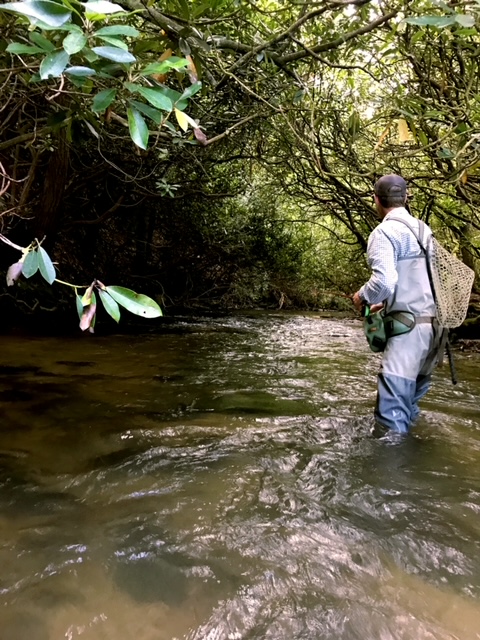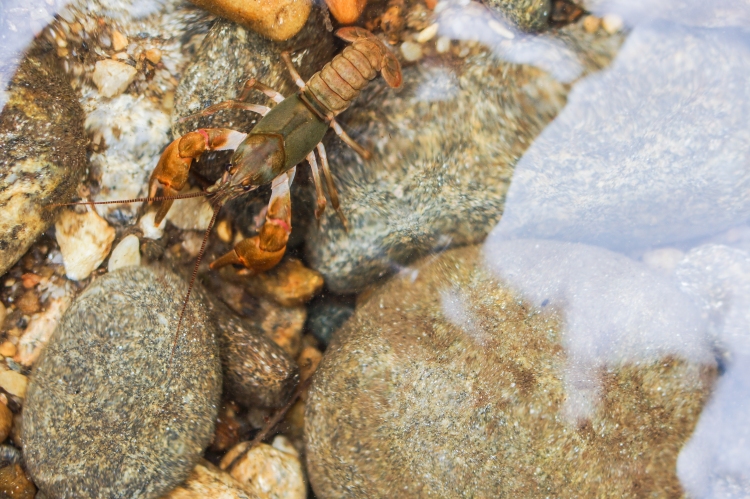Study Puts Economic Impact of French Broad River at $3.8 Billion
Partnership studies economic impact, environmental value of river
Read the full study

Asheville, NC – March 21, 2022 – The French Broad River watershed has been a defining feature of Western North Carolina for over 300 million years, serving as an important recreational haven to locals and visitors, a key selling point for breweries and outfitters, and an irreplaceable refuge for many rare and endangered species. A new study quantified the river’s enormous economic impact and environmental value to the counties it flows through: Avery, Buncombe, Haywood, Henderson, Madison, Mitchell, Transylvania, and Yancey.
The Partnership thanks the study’s funders:
Community Foundation of Western North Carolina
Duke Energy Foundation
Ecology Wildlife Foundation Fund
Maggie Valley Chamber of Commerce
For the last two years, the French Broad River Partnership collaborated with Dr. Steve Ha of Western Carolina University to survey over 450 river users and over 100 regional businesses, selecting those that rely on the river for all or part of their operations and revenues. Survey questions were intended to study users’ behavior and spending habits, businesses’ regular operations and revenue, and both stakeholders’ concerns about water quality and river health.

The researchers found the total economic impact of the French Broad River and its tributaries to be $3.8 billion annually. Other key findings include:
- The watershed receives 6.9 million river-influenced visitors each year. Visitors spend an average of $1277 per visit (3.2 people), with most going to lodging, food, and beverage, resulting in $2.7 billion annually in visitor spending.
- The most common reasons for visiting the watershed are hiking (27.5% of visitors), whitewater rafting (23.1%), and kayaking (20%), followed by fishing (15.9%), jogging/walking (14.5%), and parks (14.2%).
- River-reliant businesses create or maintain 38,554 jobs each year, bringing the region an estimated $273 million in annual federal tax revenue and $234 million in annual state and local tax revenue.
In comparison, according to the National Park Service, the nearby Blue Ridge Parkway provided $1.3 billion in total economic output and sustained 15,473 jobs in 2020. Great Smoky Mountains National Park provided $1.4 billion in total economic output and sustained 14,707 jobs the same year.
“New assets like the Greenway in the River Arts District and the one in development in Woodfin all start with the river as the basis for development and enjoyment of the community,” said Leah Wong Ashburn, President/CEO of Highland Brewing Company. “The river draws people. It adds life and energy like no other feature of the area.”

The value of the river extends beyond its economic impact. Researchers estimate the environmental value of the French Broad River and its tributaries to be an additional $2.9 billion, which includes the watershed’s existence value and bequest value. Key study findings include:
- The existence value of the river is $2.4 billion. The existence value refers to the value of simply knowing an environmental feature exists, even if it is never personally utilized. This includes Western North Carolina residents’ willingness to pay for the mere existence of the river.
- The bequest value of the river is an additional $585 million. The bequest value refers to the value the current generation places on an environmental feature for future generations’ availability and use. This includes the current generation’s willingness to pay to preserve a resource for future generations.
- Of the users surveyed, 72.4% said they were willing to pay to improve the river’s water quality. Of businesses surveyed, 26.3% said they were willing to do the same.
“We appreciate the river as the defining characteristic of the entire region. It is imminently connected to everything: agriculture and quality of life,” said Charlie Jackson of the Appalachian Sustainable Agriculture Project. “It is a very visible connector in our community.”
The French Broad River Partnership will use these findings to work with its partners, non-profit organizations, chambers of commerce, business leaders, and local and state governments to plan a sustainable future for the river, including bolstering support for future projects for river access and environmental protection.
For press inquiries or for a copy of the full report, please contact Anne Keller at boardchair@riverlink.com. The French Broad River Partnership will also be presenting their findings at the Outdoor Economy Conference in April. For full details, please visit the Conference website.

About The French Broad River Partnership
The French Broad River Partnership is a consortium of 50+ conservation, governmental, and business entities in the eight WNC county region of the river watershed. The Partnership seeks to maintain and improve stream health within the French Broad River Watershed for both environmental and economic benefits by bringing together broad-based interests to work collaboratively to ensure the watershed serves as a source of drinking water and recreation while supporting biodiversity, sustainable agriculture, forestry, and economic growth.
